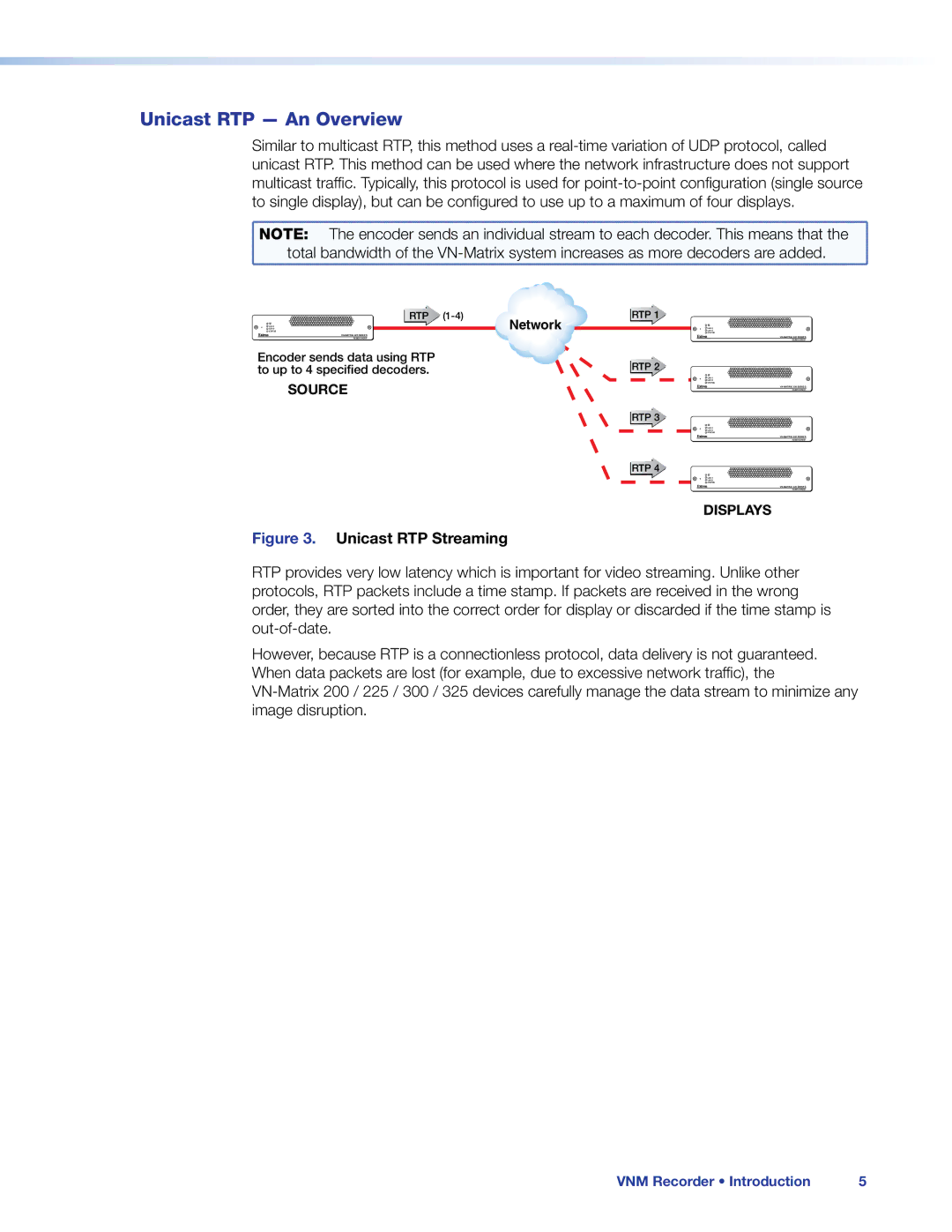
Unicast RTP — An Overview
Similar to multicast RTP, this method uses a
NOTE: | The encoder sends an individual stream to each decoder. This means that the |
total bandwidth of the | |
![]()
![]()
![]() STATUS
STATUS
RGB/DVI OVER IP
RTP | Network | RTP 1 |
|
|
![]()
![]()
![]() STATUS
STATUS
RGB/DVI OVER IP
Encoder sends data using RTP to up to 4 specified decoders.
SOURCE
RTP 2
![]()
![]()
![]() STATUS
STATUS
RGB/DVI OVER IP
RTP 3
![]()
![]()
![]() STATUS
STATUS
RGB/DVI OVER IP
RTP 4
![]()
![]()
![]() STATUS
STATUS
RGB/DVI OVER IP
DISPLAYS
Figure 3. Unicast RTP Streaming
RTP provides very low latency which is important for video streaming. Unlike other protocols, RTP packets include a time stamp. If packets are received in the wrong order, they are sorted into the correct order for display or discarded if the time stamp is
However, because RTP is a connectionless protocol, data delivery is not guaranteed. When data packets are lost (for example, due to excessive network traffic), the
VNM Recorder • Introduction | 5 |
